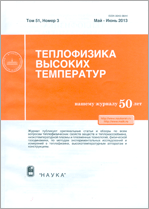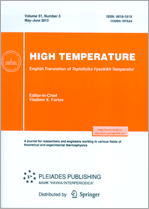|
This article is cited in 6 scientific papers (total in 6 papers)
Thermophysical Properties of Materials
The shock forced oscillator model: A harmonic approximation
D. L. Tsyganov
Instituto de Plasmas de Fusao Nuclear, Laboratorio Associado, Instituto Superior Tecnico, Av. Rovisco Pais, 1049–001, Lisboa, Portugal
Abstract:
A new model is proposed for calculating the probability $W_{i\to f}$ of transition of a quantum system in the field of external force $F$ from stationary state i to stationary state $f$ — the shock forced oscillator model (SFO). The SFO model is based on the quantum theory of strong perturbations and allows one to estimate probabilities $W_{i\to f}$ for the transitions from level i to level $f$ in the quantum system “diatomic molecule $AB$ — structureless particle $M$”. It is shown that within the harmonic approximation to the SFO model (SFHO) and the model of a forced harmonic oscillator (FHO), probabilities $W_{i\to f}$ for the transition from stationary state i into some new state f are equal. In the harmonic approximation corresponding to the model SFHO, probabilities $W_{i\to f}$ for the transitions from level $i$ to level $f$ depend on the squared force parameter characterizing the force action of a structureless particle $M$ on the diatomic molecule $AB$. In addition, we compare transition probabilities $W_{i\to f}$ calculated using the Morse potential, the classical Lennard–Jones potential, and the “improved” Lennard–Jones potential (with the $\varepsilon$ parameter corresponding to the FHO model) in the system $\mathrm{N}_2$–$\mathrm{N}_2$. We propose to use this model at temperatures above 5000 K.
Received: 21.10.2012
Citation:
D. L. Tsyganov, “The shock forced oscillator model: A harmonic approximation”, TVT, 52:1 (2014), 53–62; High Temperature, 52:1 (2014), 48–56
Linking options:
https://www.mathnet.ru/eng/tvt7 https://www.mathnet.ru/eng/tvt/v52/i1/p53
|


| Statistics & downloads: |
| Abstract page: | 1230 | | Full-text PDF : | 115 | | References: | 87 |
|





 Contact us:
Contact us: Terms of Use
Terms of Use
 Registration to the website
Registration to the website Logotypes
Logotypes








 Citation in format
Citation in format 
